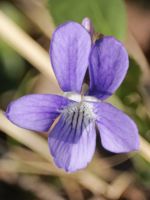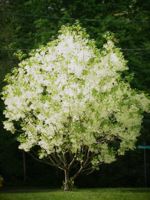Mon-Fri 9am - 5pm Mountain time
White Fringe Tree vs Early Blue Violet
Viola adunca
Chionanthus virginicus
NOT AVAILABLE THIS SEASON - MIGHT RETURN
NOT AVAILABLE THIS SEASON - MIGHT RETURN
Early Blue Violet is a low-growing native perennial wildflower valued for its striking early-spring blooms. The flowers range in color from vibrant blue to deep violet, often marked with pale highlights and fine white hairs. They provide an important early nectar source for pollinators and serve as a host plant for several fritillary butterfly species.
It spreads by both seed and rhizomes, gradually forming small colonies. Its dark green, heart-shaped leaves add ornamental appeal, and the plant shows some resistance to deer browsing. Early Blue Violet is well-suited to naturalization projects and pollinator-friendly gardens, and has also been used in coastal butterfly habitat restoration in the Pacific Northwest.
White Fringe Tree is known for its fringe-like white flowers. It can either grow as a small tree or a large multistemmed shrub. The White Fringe Tree has separate male and female plants. Both male and female flowers have white fringe-like petals, but the male flowers are longer and showier. The female flowers give way to clusters of dark blue to black berries. These berries are not edible for humans but attract birds and other wildlife.
The White Fringe Tree is tolerant of clay soils, saline soils, and air pollution but does not do well in prolonged dry conditions.
Early Blue Violet Quick Facts
White Fringe Tree Quick Facts
Toxicity: rhizomes, fruit, seed poisonous to humans

